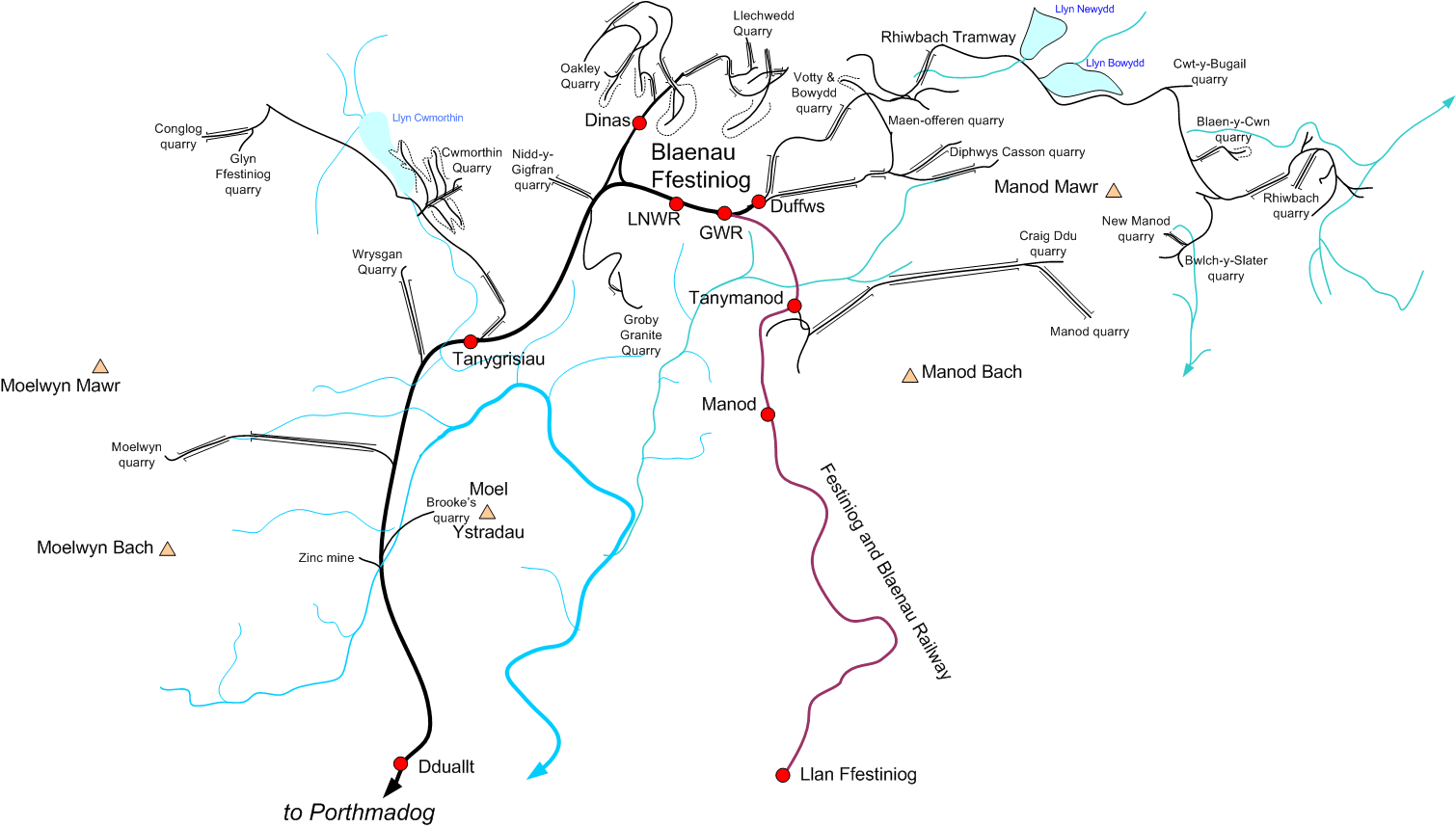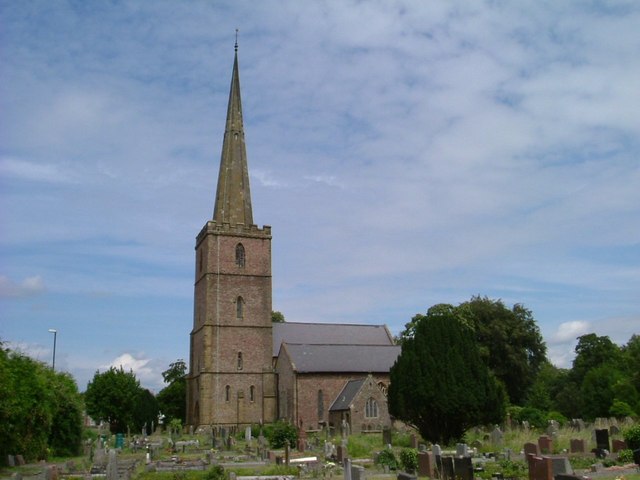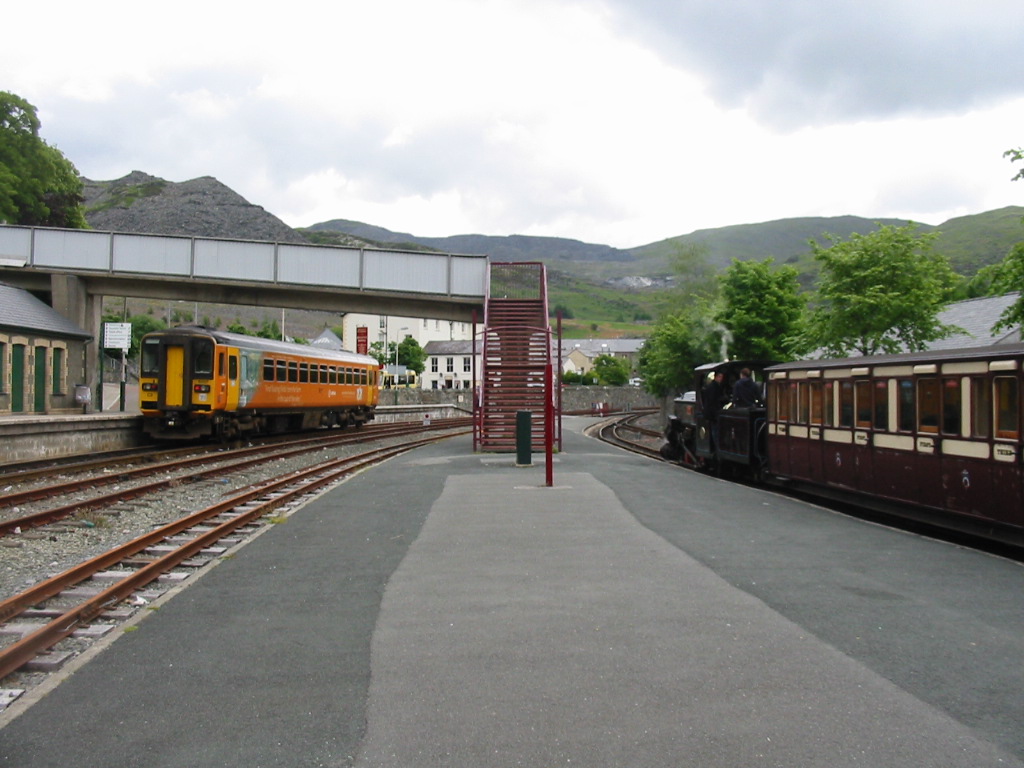|
Bala And Ffestiniog Railway
The Bala and Festiniog Railway was a , standard gauge, railway backed by the Great Western Railway (GWR) in north-west Wales. It connected Bala with Blaenau Ffestiniog. History The railway originally connected Bala with Llan Ffestiniog. It was incorporated on 28 July 1873 and opened on 1 November 1882. In 1883 the line was extended by converting the existing Festiniog and Blaenau Railway between Llan Ffestiniog and Blaenau Ffestiniog from gauge to standard gauge. The line terminated at Blaenau Ffestiniog (GWR) where until 1939 it connected with the Ffestiniog Railway to Porthmadog. At , the line connected with the Ruabon to Barmouth GWR line. The Bala and Festiniog was vested in the Great Western Railway on 1 July 1910. On nationalisation in 1948 management of the line passed to the Western Region of British Railways. The line closed to passengers in 1960 and to freight in 1961. An unusual feature of freight operation on the line was the carriage of gauge slate wagons ... [...More Info...] [...Related Items...] OR: [Wikipedia] [Google] [Baidu] |
Festiniog And Blaenau Railway
The Festiniog & Blaenau Railway (F&BR) was a narrow gauge railway built in 1868 to connect the town of Blaenau Ffestiniog in Wales with the slate quarries around Tanymanod and the village of Llan Ffestiniog, to the south. At Blaenau Ffestiniog it made a direct connection with the Festiniog Railway (FR) with which it was closely associated during its fifteen-year life. The railway was purchased by the Bala and Festiniog Railway in 1883 and converted to to extend the Bala Ffestiniog line, a branch of the GWR's line from Ruabon to Barmouth. The promoters owned the land on which the line was built, so no parliamentary process was needed to incorporate the company or proceed with building, though the operators sought and obtained Board of Trade inspection before opening as if that were a statutory requirement. Officially the line's gauge was , however, a Board of Trade inspection in 1868 recorded it as , as did the locomotives' manufacturer's catalogue, repeated in the magaz ... [...More Info...] [...Related Items...] OR: [Wikipedia] [Google] [Baidu] |
Western Region Of British Railways
The Western Region was a region of British Railways from 1948. The region ceased to be an operating unit in its own right on completion of the "Organising for Quality" initiative on 6 April 1992. The Region consisted principally of ex- Great Western Railway lines, minus certain lines west of Birmingham, which were transferred to the London Midland Region in 1963 and with the addition of all former Southern Railway routes west of Exeter, which were subsequently rationalised. History When British Railways was created at the start of 1948, it was immediately subdivided into six Regions, largely based upon pre-nationalisation ownership. The Western Region initially consisted of the former Great Western Railway system, totalling 3,782 route miles and with its headquarters at Paddington. To this was added some minor railways and joint lines in which the GWR had an interest: *Brynmawr and Western Valleys Railway *Clifton Extension Railway * Easton and Church Hope Railway *Great ... [...More Info...] [...Related Items...] OR: [Wikipedia] [Google] [Baidu] |
Lydney
Lydney is a town and civil parish in Gloucestershire, England. It is on the west bank of the River Severn in the Forest of Dean District, and is 16 miles (25 km) southwest of Gloucester. The town has been bypassed by the A48 road since 1995. The population was about 8,960 in the 2001 census, reducing to 8,766 at the 2011 census. Increasing to 10,043 at the 2021 Census. Lydney has a harbour on the Severn, created when the Lydney Canal was built. Adjoining the town, Lydney Park gardens have a Roman temple dedicated to Nodens. Etymology According to Cook (1906) the toponym "Lydney" derives from the Old English *''Lydan-eġ'', "Lludd's Island", which could connect it with the name Nudd/Nodens. However, alternative etymologies of Lydney are offered in other sources. A. D. Mills suggests "island or river-meadow of the sailor, or of a man named *Lida", citing the forms "Lideneg" from c. 853 and "Ledenei" from the 1086 Domesday Book. History In the Iron Age a promontory fort w ... [...More Info...] [...Related Items...] OR: [Wikipedia] [Google] [Baidu] |
List Of Preserved British Rail Class 08 Locomotives
A ''list'' is any set of items in a row. List or lists may also refer to: People * List (surname) Organizations * List College, an undergraduate division of the Jewish Theological Seminary of America * SC Germania List, German rugby union club Other uses * Angle of list, the leaning to either port or starboard of a ship * List (information), an ordered collection of pieces of information ** List (abstract data type), a method to organize data in computer science * List on Sylt, previously called List, the northernmost village in Germany, on the island of Sylt * ''List'', an alternative term for ''roll'' in flight dynamics * To ''list'' a building, etc., in the UK it means to designate it a listed building that may not be altered without permission * Lists (jousting), the barriers used to designate the tournament area where medieval knights jousted * ''The Book of Lists'', an American series of books with unusual lists See also * The List (other) * Listing (di ... [...More Info...] [...Related Items...] OR: [Wikipedia] [Google] [Baidu] |
DB Cargo
DB Cargo (previously known as Railion and DB Schenker Rail) is an international transport and logistics company. It is responsible for all of the rail freight transport activities of the German railway company Deutsche Bahn (the DB Group) both inside Germany and on a global level. DB Cargo has a registered office in Mainz and a further administrative office in Frankfurt am Main. The company was founded as ''DB Cargo AG'' on 1 January 1999 under the second stage of liberalisation reform of the German railway system (Bahnreform) underway around this time. Initial operations were primarily focused on the rail freight market within Germany; however, during early 2000, the company was reorganised under the ''Railion'' holding company as part of a merger between DB Cargo and the Dutch state-owned rail company Nederlanse Spoorwegen's rail freight operations. This new structure was designed for the cooperation, and incorporation, of future partnerships with other rail freight companie ... [...More Info...] [...Related Items...] OR: [Wikipedia] [Google] [Baidu] |
Rail Trail
A rail trail is a shared-use path on railway right of way. Rail trails are typically constructed after a railway has been abandoned and the track has been removed, but may also share the right of way with active railways, light rail, or streetcars (rails with trails), or with disused track. As shared-use paths, rail trails are primarily for non-motorized traffic including pedestrians, bicycles, horseback riders, skaters, and cross-country skiers, although snowmobiles and ATVs may be allowed. The characteristics of abandoned railways—gentle grades, well-engineered rights of way and structures (bridges and tunnels), and passage through historical areas—lend themselves to rail trails and account for their popularity. Many rail trails are long-distance trails, while some shorter rail trails are known as greenways or linear parks. Rail trails around the world Americas Bermuda The Bermuda Railway ceased to operate as such when the only carrier to exist in Bermuda folded in 1948. ... [...More Info...] [...Related Items...] OR: [Wikipedia] [Google] [Baidu] |
Arenig Railway Station MMB 01
In geology, the Arenig (or Arenigian) is a time interval during the Ordovician period and also the suite of rocks which were deposited during this interval. History The term was first used by Adam Sedgwick in 1847 with reference to the "Arenig Ashes and Porphyries" in the neighbourhood of Arenig Fawr, in Merioneth, North Wales. The rock-succession in the Arenig district has been recognized by W. G. Fearnsides (“On the Geology of Arenig Fawr and Moel Llanfnant", Q.J.G.S. vol. lxi., 1905, pp. 608–640, with maps). The above succession is divisible into: # A lower series of gritty and calcareous sediments, the "Arenig Series" as it is now understood; # A middle series, mainly volcanic, with shale, the "Llandeilo Series"; and # The shale and limestones of the Bala or Caradoc Stage. It was to the middle series (2) that Sedgwick first applied the term "Arenig". In the typical region and in North Wales generally the Arenig series appears to be unconformable upon the Cambrian ... [...More Info...] [...Related Items...] OR: [Wikipedia] [Google] [Baidu] |
Regional Railways
Regional Railways was one of the three passenger sectors of British Rail created in 1982 that existed until 1997, two years after privatisation. The sector was originally called ''Provincial''. Regional Railways was the most subsidised (per passenger km) of the three sectors. Upon formation, its costs were four times its revenue. The sector was broken up into eight franchises during the privatisation of British Rail and ceased to exist on 31 March 1997. Formation Upon sectorisation in 1982, three passenger sectors were created: InterCity, operating principal express services; London & South East (renamed Network SouthEast in 1986) operating commuter services in the London area, and Provincial (renamed Regional Railways in 1989) responsible for all other passenger services. In the metropolitan counties, local services were managed by the Passenger Transport Executives. Services Regional Railways inherited a diverse range of routes, comprising both express and local services. ... [...More Info...] [...Related Items...] OR: [Wikipedia] [Google] [Baidu] |
Modern Railways
''Modern Railways'' is a British monthly magazine covering the rail transport industry which was published by Ian Allan until March 2012, and Key Publishing since then. It has been published since 1962. The magazine was originally based in Shepperton, Middlesex. It has always been targeted at both railway professionals and serious amateurs, an aim which derives from its origins as an amalgamation of the enthusiast magazine ''Trains Illustrated'' and the industry journal ''The Locomotive'' in the hands of its first editor Geoffrey Freeman Allen. It is currently edited by Philip Sherratt after the retirement of James Abbott. Regular contributors include Roger Ford, Ian Walmsley, Alan Williams and Tony Miles. The large section regularly written by Roger Ford is called ‘Informed Sources’. That by Ian Walmsley is called ‘Pan Up’. Trains Illustrated The first edition of ''Trains Illustrated'' was published at the beginning of 1946. Due to post-war paper shortages issues 1 ... [...More Info...] [...Related Items...] OR: [Wikipedia] [Google] [Baidu] |
Blaenau Ffestiniog Railway Station
Blaenau Ffestiniog railway station serves the slate mining town of Blaenau Ffestiniog, Wales, and is the passenger terminus of the Conwy Valley Line from Llandudno Junction. Transport for Wales Rail operate through services to Llandudno Junction and Llandudno. The station is a joint station with the narrow gauge Ffestiniog Railway, which operates primarily tourist passenger services to Porthmadog throughout most of the year. A feature of the standard gauge service is the availability on trains and buses of the popular "Gwynedd Red Rover" day ticket. Facilities The standard gauge side has a single platform (Platform 1) opening directly onto the station car park and the High Street. There is a standard gauge run-round loop used by occasional locomotive-hauled charter trains. The narrow gauge side has an island platform (Platforms 2 and 3) with an overall roof; this platform is reached by a footbridge, and also from the standard gauge platform and the town centre by a pedestrian ... [...More Info...] [...Related Items...] OR: [Wikipedia] [Google] [Baidu] |
Trawsfynydd Nuclear Power Station
Trawsfynydd nuclear power station ( cy, Atomfa Trawsfynydd) is a decommissioned Magnox nuclear power station situated in Snowdonia National Park in Gwynedd, Wales. The plant, which became operational in 1965, was the only nuclear power station in the UK to be built inland, with cooling water that was taken from the man-made Llyn Trawsfynydd reservoir which also supplies the hydro-electric Maentwrog power station. It was closed in 1991. Its planned decommissioning by Magnox Ltd was expected to take almost 100years, but in 2021 the Welsh government arranged for the power station to be redeveloped using small-scale reactors. History The power station, which takes its name from the nearby village of Trawsfynydd, was designed by Basil Spence. The construction, which was undertaken by a consortium involving Crompton Parkinson, International Combustion, Fairey Engineering and Richardsons Westgarth, and known as the Atomic Power Constructions (APC), began in July 1959, and both of the ... [...More Info...] [...Related Items...] OR: [Wikipedia] [Google] [Baidu] |






